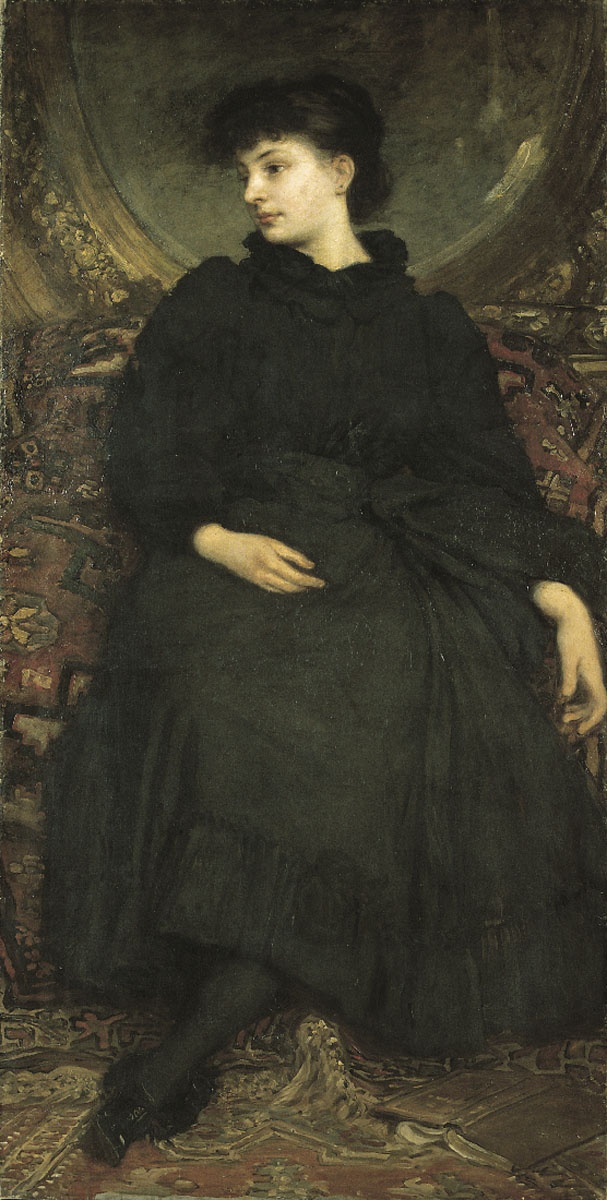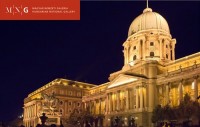The most popular fresco painter in the 1870s–1880s, Károly Lotz turned to portrait painting more intensely in the 1890s. His model was primarily his foster daughter Kornélia. Practically, his portraits of Kornélia form a series, in which she embodies a bathing nymph and goddess, a bacchante and grand lady, an innocent virgin and a serious woman, all at the same time. From Lotz’ portraits, it is hard to make out what Kornélia was actually like – we just take her as the changeable woman standing for the type of ideal female at the turn of the century. It is fascinating that the modern female personality shines through even the old-fashioned, historicist milieu of the Kornélia portraits, in anticipation of the great female types of the 20th century. The narrow standing format of this portrait of Kornélia in a black dress, the graceful harmony of the mirror frame in the background with the subtly swaying forms of the model already point to the forms of art nouveau, the colour scheme predominated by black also being in line with the tendencies around the turn of the century.
en

